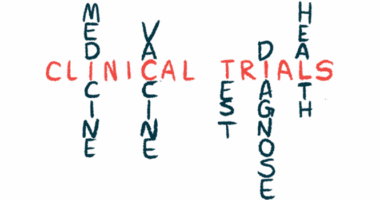Dosing begins in trial of pulmonary sarcoidosis treatment OATD-01
Proof-of-concept KITE study will test therapy at 20-30 centers in US, Europe

A first patient has been dosed in Scotland as part of Molecure’s Phase 2 clinical trial — taking place in the U.S. and Europe — that will test the pulmonary sarcoidosis treatment candidate OATD-01 versus a placebo.
“The first administration to a patient with pulmonary sarcoidosis is the realization of our mission focused on helping and transforming the lives of patients with incurable diseases through the development of therapies and the opportunity to offer them new treatment options,” Marcin Szumowski, PhD, Molecure’s CEO, said in a company press release.
“Launched in the UK, the Phase [2] trial involving patients with active disease … is a significant milestone in the clinical development of our lead program,” Szumowski said.
The proof-of-concept KITE study (NCT06205121) aims to recruit about 100 adults with active pulmonary sarcoidosis — both those treatment-naïve and individuals previously given other therapies.
The trial will run at approximately 20-30 centers in all, across the European Union, as well as in Norway, the U.K., and the U.S. Its launch followed a green light from the U.S. Food and Drug Administration (FDA) last year.
Pulmonary sarcoidosis treatment aims to reduce inflammation
Simbec Orion, a clinical research organization, is responsible for the organization and comprehensive conduct of the study. The findings are expected by the end of 2025, according to Molecure.
“The results of this study will be strategically important for further value creation and commercialization of OATD-01,” Szumowski said.
In pulmonary sarcoidosis, granulomas — small clumps of inflammatory cells — accumulate in the lungs, leading to inflammation and scarring, called fibrosis.
OATD-01 is a small oral molecule designed to block the activity of chitotriosidase 1 (CHIT1), an enzyme involved in multiple immune functions that’s found at high levels in the lungs and blood of sarcoidosis patients. Greater CHIT1 activity has been linked to higher granuloma burden and disease activity.
By suppressing this enzyme’s activity, OATD-01 is expected to slow pulmonary sarcoidosis progression and other lung diseases also linked to CHIT1 activity.
“It is a landmark moment also because it is the first time that a chitotriosidase 1 inhibitor has been offered to patients,” said Szumowski, who called Molecure “a pioneer and global leader in the development of therapies based on the inhibition of chitinase activity.”
According to Szumowski, this “proof-of-concept in human” study will be crucial in “validating this therapeutic approach, as there is a whole spectrum of diseases whose development is associated with similar molecular mechanisms.”
OATD-01 showed benefits in mouse models of sarcoidosis-like disease
In preclinical studies, OATD-01 was able to ease inflammation and reduce the number of lung granulomas in mouse models of sarcoidosis-like disease.
Samson Fung, MD, chief medical officer and board member of Molecure, said the company is “proud” to have moved into human testing.
“In a broad spectrum of preclinical studies, we have confirmed the great potential of OATD-01 to become the new standard of care for pulmonary sarcoidosis,” Fung said, noting further that data from a Phase 1 trial in healthy volunteers indicated OATD-01 was safe and could strongly suppress CHIT1.
Now, in the Phase 2 study, “we aim to demonstrate that blocking chitinases in patients has a therapeutic effect and inhibits inflammatory processes,” Fung said.
In a broad spectrum of preclinical studies, we have confirmed the great potential of OATD-01 to become the new standard of care for pulmonary sarcoidosis.
In the trial, patients will be randomly assigned to 25 mg OATD-01 or a placebo, taken once a day for 12 weeks, or about three months.
The main goal, as agreed by the FDA, is to determine the effectiveness of OATD-01 in reducing granuloma-associated inflammation in lung tissue, which will be assessed by PET and CT scans. Additional parameters include lung function, heart and neurological assessments, as well as safety.
“The primary endpoint of the study is the arrest or reversal of disease progression and lung damage as assessed by the granulomatous inflammation reduction score,” Fung said. “The therapy also aims to alleviate the symptoms of the disease understood as an improvement in lung function … as well as an improvement in quality of life and a shift away from corticosteroids.’’
A statistical sub-analysis will be conducted with about 50 patients who complete the three-month study. This analysis will be conducted by an independent committee and will inform on the total number of patients needed for the trial.








